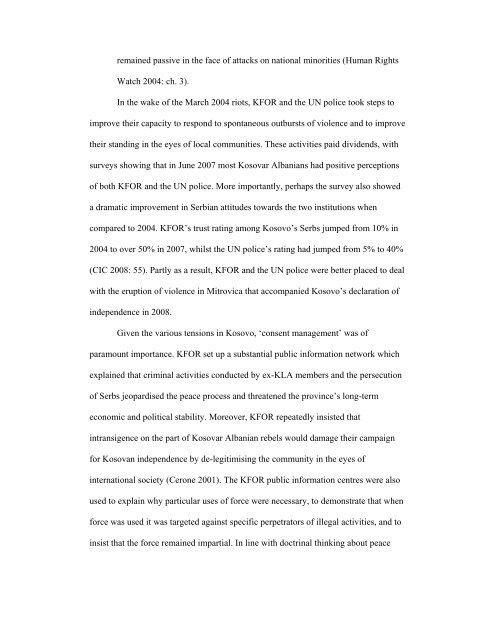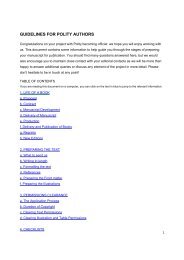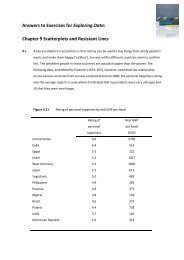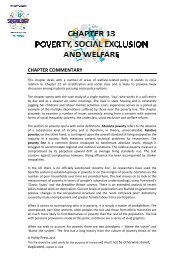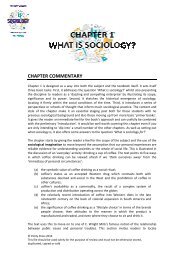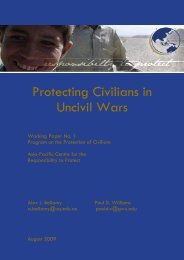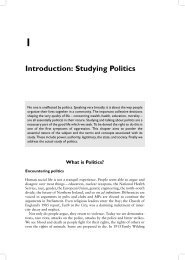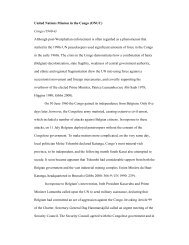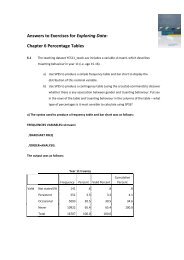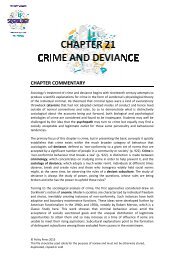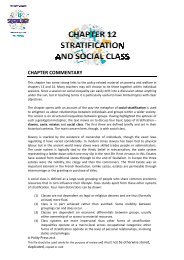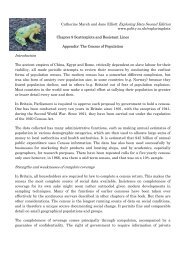KFOR case study - Polity
KFOR case study - Polity
KFOR case study - Polity
You also want an ePaper? Increase the reach of your titles
YUMPU automatically turns print PDFs into web optimized ePapers that Google loves.
emained passive in the face of attacks on national minorities (Human Rights<br />
Watch 2004: ch. 3).<br />
In the wake of the March 2004 riots, <strong>KFOR</strong> and the UN police took steps to<br />
improve their capacity to respond to spontaneous outbursts of violence and to improve<br />
their standing in the eyes of local communities. These activities paid dividends, with<br />
surveys showing that in June 2007 most Kosovar Albanians had positive perceptions<br />
of both <strong>KFOR</strong> and the UN police. More importantly, perhaps the survey also showed<br />
a dramatic improvement in Serbian attitudes towards the two institutions when<br />
compared to 2004. <strong>KFOR</strong>’s trust rating among Kosovo’s Serbs jumped from 10% in<br />
2004 to over 50% in 2007, whilst the UN police’s rating had jumped from 5% to 40%<br />
(CIC 2008: 55). Partly as a result, <strong>KFOR</strong> and the UN police were better placed to deal<br />
with the eruption of violence in Mitrovica that accompanied Kosovo’s declaration of<br />
independence in 2008.<br />
Given the various tensions in Kosovo, ‘consent management’ was of<br />
paramount importance. <strong>KFOR</strong> set up a substantial public information network which<br />
explained that criminal activities conducted by ex-KLA members and the persecution<br />
of Serbs jeopardised the peace process and threatened the province’s long-term<br />
economic and political stability. Moreover, <strong>KFOR</strong> repeatedly insisted that<br />
intransigence on the part of Kosovar Albanian rebels would damage their campaign<br />
for Kosovan independence by de-legitimising the community in the eyes of<br />
international society (Cerone 2001). The <strong>KFOR</strong> public information centres were also<br />
used to explain why particular uses of force were necessary, to demonstrate that when<br />
force was used it was targeted against specific perpetrators of illegal activities, and to<br />
insist that the force remained impartial. In line with doctrinal thinking about peace


